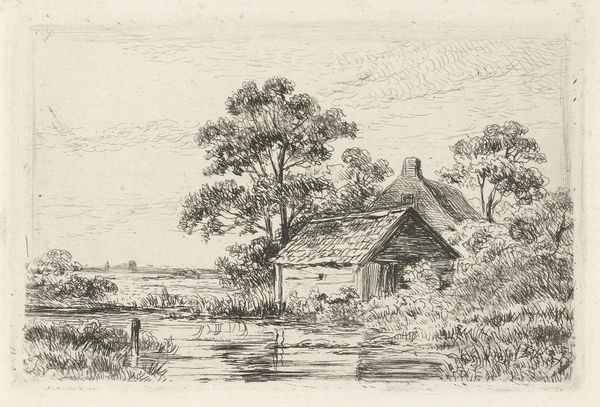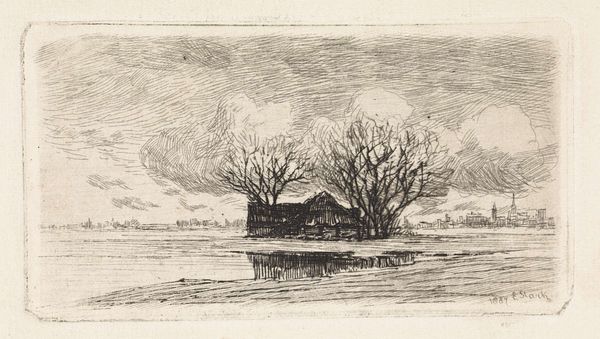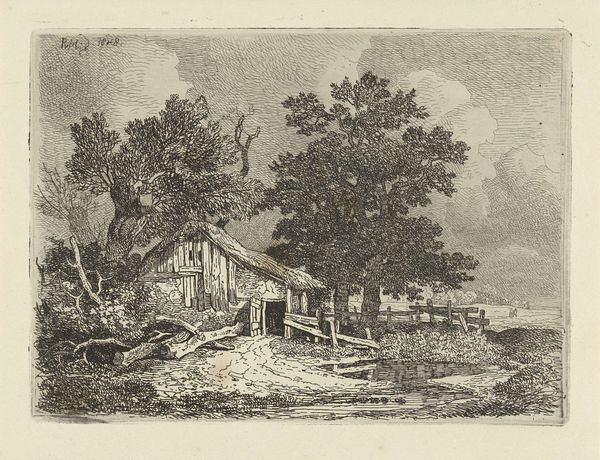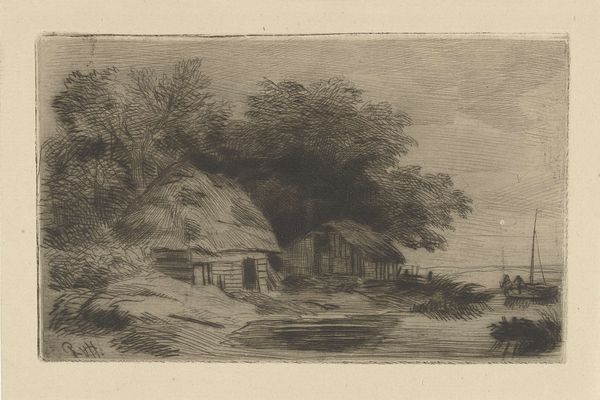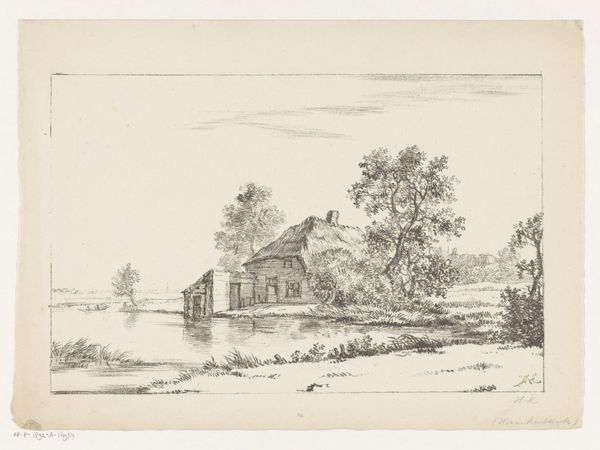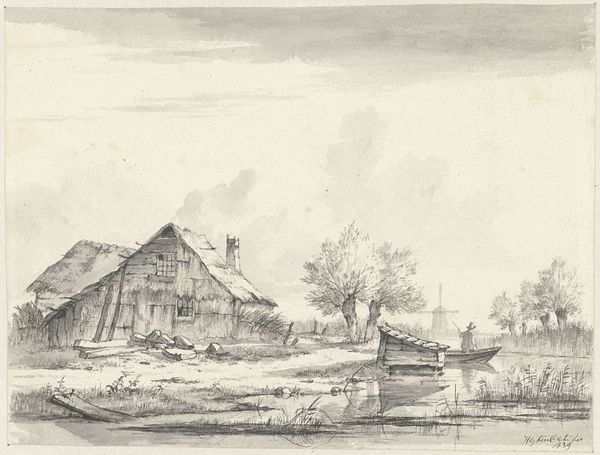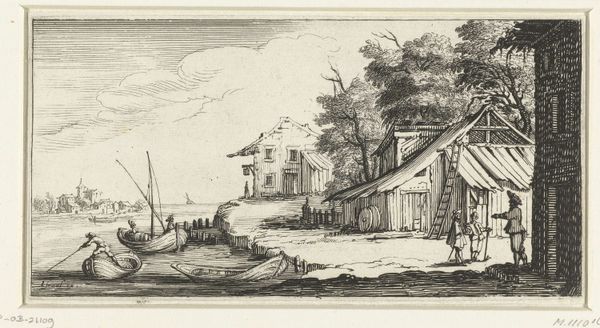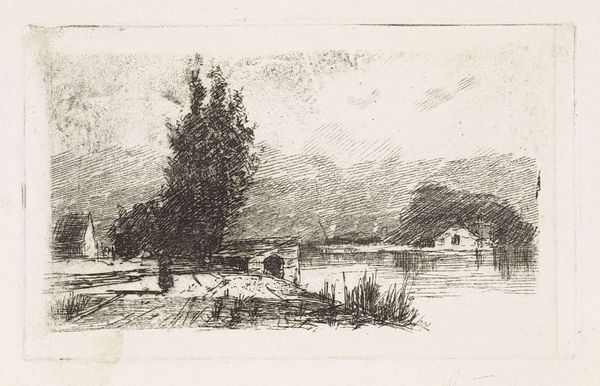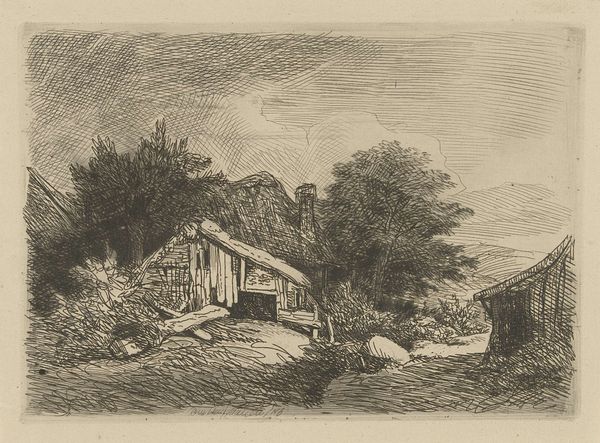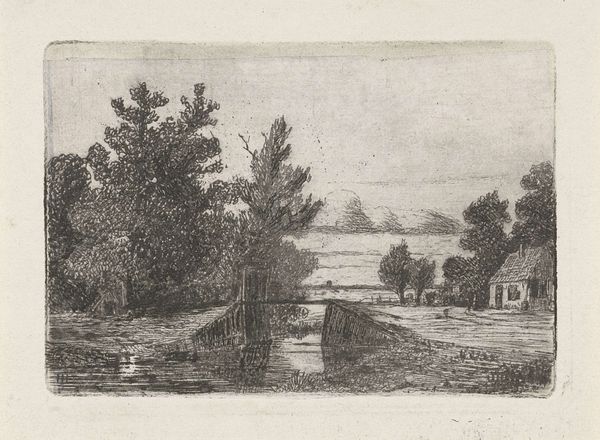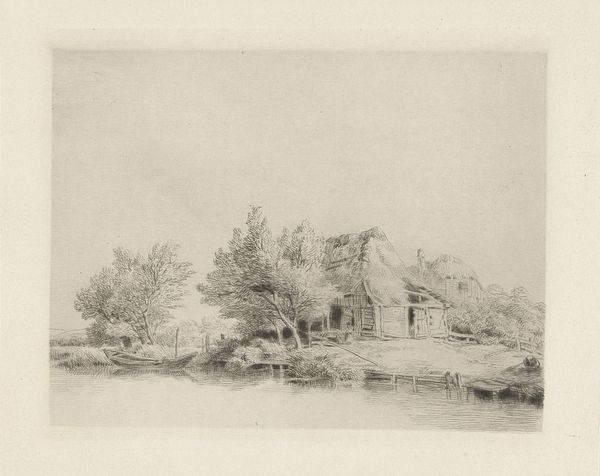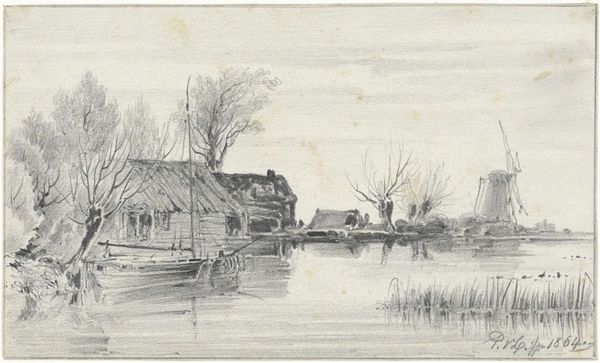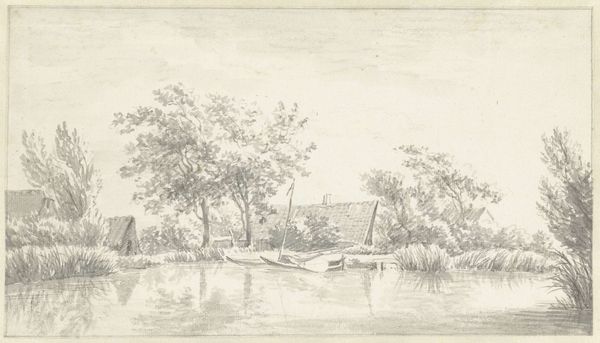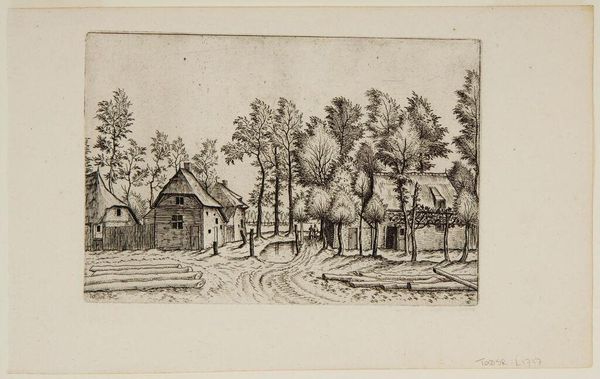
drawing, paper, ink
#
drawing
#
landscape
#
paper
#
ink
#
realism
Dimensions: height 100 mm, width 158 mm
Copyright: Rijks Museum: Open Domain
Editor: We’re looking at "House on the Water with Rowing Boat" by Elias Stark, created sometime between 1859 and 1933. It’s a delicate drawing in ink on paper, currently held in the Rijksmuseum. I’m immediately drawn to its stillness, almost melancholic mood. How do you see it, considering its place in history? Curator: What strikes me is the depiction of everyday life. This wasn't created in a vacuum; realism as a movement was becoming popular. How do we interpret a scene that deliberately lacks the grandeur typically associated with art commissioned by the wealthy? It makes you consider its audience, and what messages an artist like Stark might be trying to convey. Editor: That’s a great point! So, beyond just representing the world as it is, are you suggesting this reflects a shift in artistic values? A democratizing influence perhaps? Curator: Precisely. We can ask, was this image meant to be distributed widely through prints, or did it belong to an artist practicing a newly evolving genre of the everyday, perhaps even commenting on burgeoning industrial landscapes? It challenges the existing art institutions. What narrative about labour, leisure or locality do you imagine given the artist's choice to present a humble dwelling? Editor: I hadn’t considered that at all. It really does force you to think about the wider social implications of the art, and where this type of imagery fit into Dutch society. Curator: Exactly, art isn't just what's on the surface; it’s deeply intertwined with social and political forces. Reflecting on this, the question becomes less about *what* is depicted and more about *why* and *for whom*. Editor: That makes me rethink everything I thought I knew about landscape drawing! I'll definitely be paying more attention to that context going forward.
Comments
No comments
Be the first to comment and join the conversation on the ultimate creative platform.
